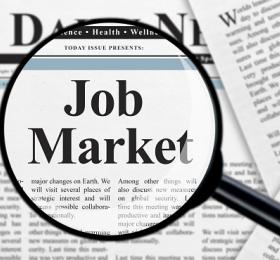
August 2, 2024
114,000 jobs in July = September rate cut
Taking July payrolls at face value and accounting for revisions to prior months, we are now clipping along at ~170,000 new jobs per month (3-month average). This represents a significant slowdown from the prior quarter (remember financial markets like the “goldilocks formula” in Laborland, ±200,000 jobs/ month). Given the softening over the last couple of months, it is not surprising that the official unemployment rate jumped to 4.3% in July with U6 touching the highest level since the end of ’21. Labor force participation, however, is steadily increasing as more workers are drawn into the American economy. Moreover, if we look at the past couple of quarters, we find the US job engine has churned out ~210,000 jobs each month, AND there is ample demand within the system (June JOLTS ~8.2M)! Real M2 is on the rise again (>$6.7T) and there is more than $6T in US money market accounts. As we have noted, the average American household is a concern for us, but barring a larger than expected deterioration in consumption, the US economy is in a good position to weather weakness.
The July FOMC meeting came and went without much in the way of “fireworks.” Little changed within the FOMC statement, and Mr. Powell essentially stayed on script for the duration of his press conference—the Fed needs more confidence that inflation is returning to its 2% target etc… Though Jay did stumble over a question regarding the timing of monetary easing, the reality is that the Federal Reserve essentially teed up a “live” September meeting at which it is extremely likely to reduce rates by 25 bps. As an aside, the Bank of England officially kicked off its easing cycle this week with a reduction of its official policy rate (25 bps)—the BOE joins the Bank of Canada (BOC) and the European Central Bank (ECB) with respect to its policy stance. It is also worthwhile to note that the Bank of Japan is moving in the opposite direction—money is no longer “free” in Japan (but it’s still pretty close)! As our clients and followers might recall, we have been in the camp of a September cut from Powell and Co for quite some time. Moreover, our thoughts regarding the pace of pursuant cuts haven’t changed (3-4 cuts over the next 12 months). Interestingly, some might view that as hawkish these days, but we find it reasonable given the trajectory of the US economy within the global context.
Real GDP is ticking higher as is productivity in the US, BUT pricing pressures remain. ISM’s pricing component in both manufacturing and nonmanufacturing continues to indicate expansion. Meanwhile, employment and new orders suggest slack is building. So, we are not as quick as some to support the opinion that fed funds are entirely too restrictive for the American economy. Certainly, the pace of US inflation is slowing, but that is partly attributable to stagnation abroad. Zooming out for a moment…
The Eurozone is growing at less than 1% YoY (GDP, real terms). This is no surprise with an ongoing war in Ukraine. Meanwhile, Chinese economic growth is running at the slowest pace in 30 yrs! Industrial production and retail sales tend to move together in China, and they don’t paint a pretty picture. We don’t see much information relating specifically to Chinese consumer sentiment (Surprised? I hope not), but the current employment data taken in conjunction with a prolonged real estate slump and stock indices that are trading at levels last seen when the world was emerging from the Financial Crisis (2009) support our view that it will take a strong combination of accommodation and time/ patience for sentiment and consumption to return to “normal” levels. Xi Jinping’s economy is the worst that it has been since his tenure began as president of the People’s Republic of China. Higher real rates have hurt consumers and businesses around the world—here in the US, we happen to have weathered the storm better than most. A rate cut from the Federal Reserve in September would not make that much of a difference in relative terms, but it could be the start of something that shifts sentiment the world over.
Corporate profitability has been another bright spot for Americans. As we wrap up the latest round of earnings season, the vast majority of S&P 500 companies have exceeded expectations on the bottom line. There have been a couple of high-profile misses, but in general guidance for sales/ revenue continue to tick higher along with forward earnings. To be sure, there are pockets of relative weakness and strength, which is expected, but the overall “health” of corporate America is quite good. The back half of ’24 will be interesting.
News Release: Bureau of Labor Statistics (The Employment Situation- July 2024)